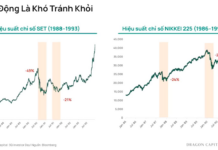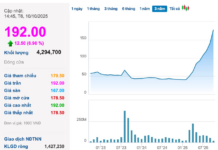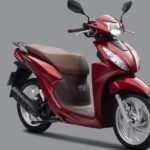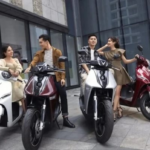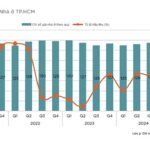Here is the content of the program “On the Chair 181” broadcast on HTV9 on October 9th.
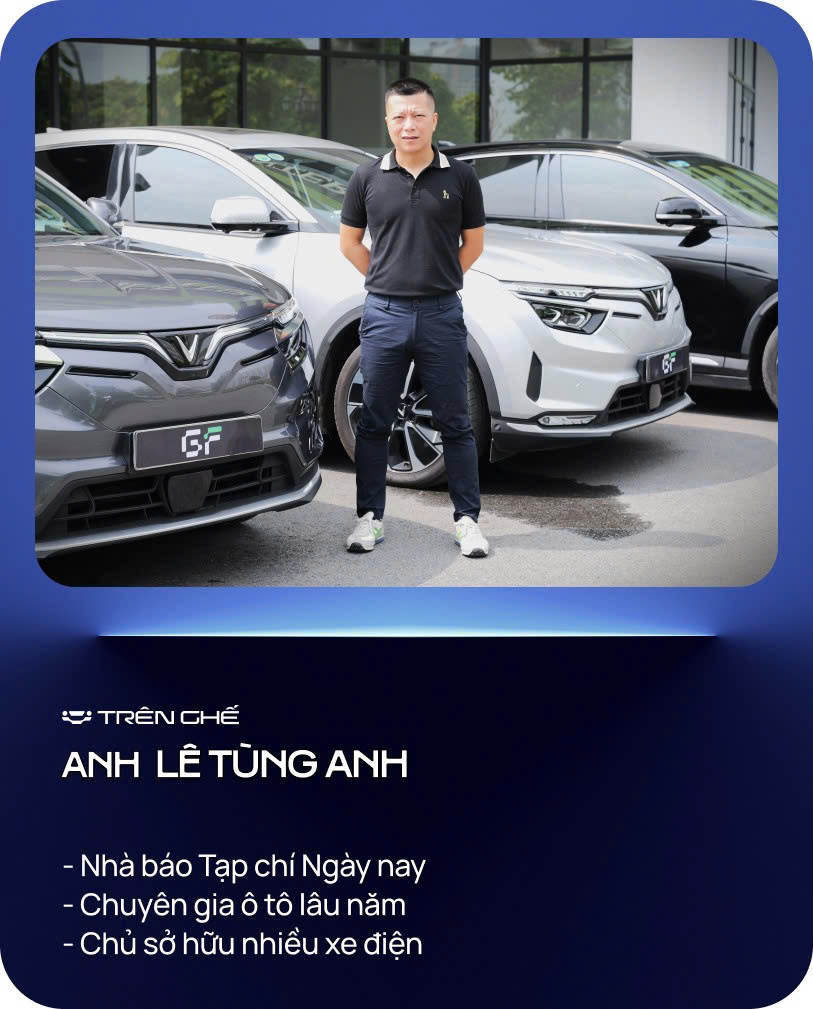
In this episode of “On the Chair 181,” host Viet Anh and journalist Le Tung Anh discuss the topic: Where does Vietnam’s electric vehicle charging infrastructure stand compared to the world?
Vietnam’s electric vehicle market is booming, with charging networks playing a crucial role. According to some sources, V-Green alone operates 150,000 charging ports in Vietnam. What’s your take on this number?
I believe the figure of 150,000 is entirely accurate. V-Green’s charging infrastructure now spans from the North to the South, covering urban areas and remote regions alike. While there might be some confusion between “charging stations” and “charging guns,” the number of charging guns—150,000—is highly feasible. This demonstrates V-Green’s substantial investment in expanding Vietnam’s electric vehicle infrastructure.
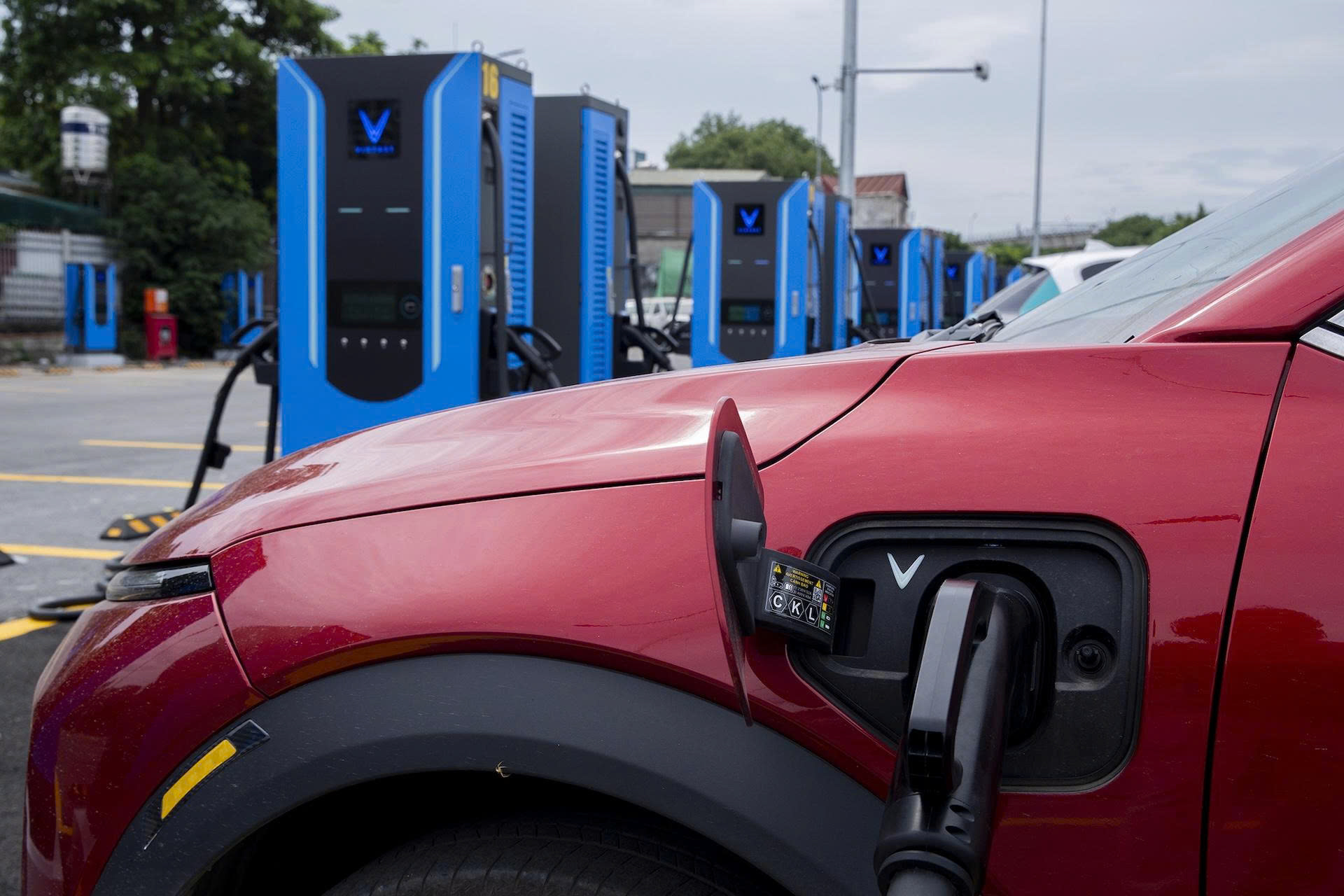
V-Green operates 150,000 charging ports. Photo: VinFast
While Vietnam has electric vehicles from various brands, VinFast’s presence seems dominant. What’s your perspective on the current relationship between electric vehicles and charging stations?
In Vietnam’s current market, if you want to use an electric car as seamlessly as a conventional vehicle—meaning you can charge anywhere without worrying about infrastructure—VinFast is virtually the only option. They are the only brand offering both a comprehensive user experience and an extensive charging network. V-Green’s infrastructure development has been remarkably rapid.
Just a year ago, the issue of “competing for charging spots” was a common topic on social media groups. Now, the situation has vastly improved. In major cities like Hanoi, Ho Chi Minh City, and Da Nang—where developing charging stations in residential areas is challenging—V-Green has achieved impressive coverage.
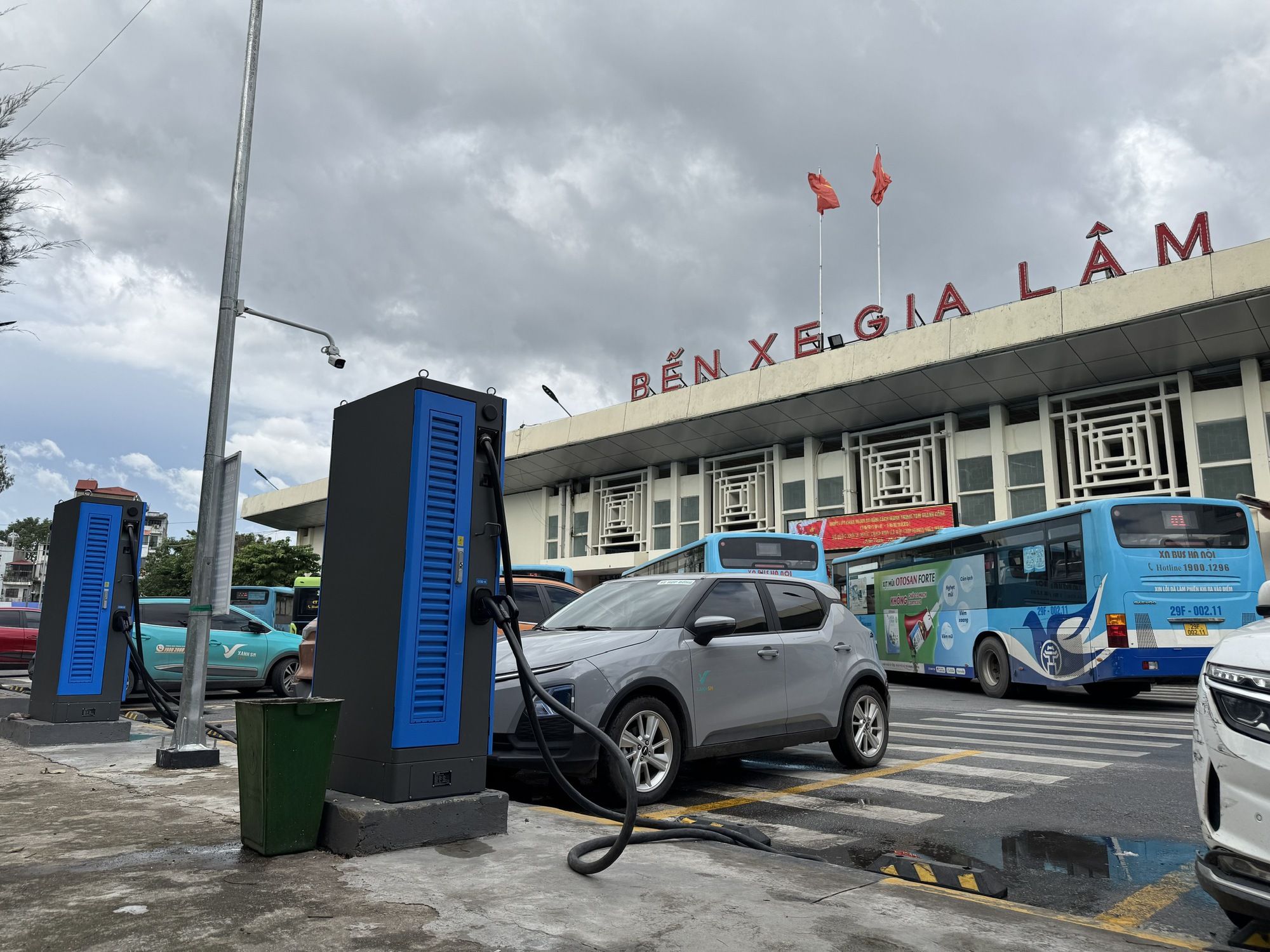
VinFast electric vehicle charging station at Gia Lam bus station.
For instance, in Hanoi, major bus stations like Giap Bat, Gia Lam, and Nhon all feature large charging stations capable of serving 50–60 vehicles simultaneously, equipped with ultra-fast charging guns. Users can fully charge their vehicles in just 30 minutes, eliminating wait times.
In remote provinces, users have rarely faced charging issues. With a V-Green station every 50–60 km, VinFast’s charging infrastructure is now relatively complete and well-operated across Vietnam.
I understand you’ve been using electric vehicles for a long time and have traveled extensively. Have you ever had to charge at a non-V-Green station?
I’ve tried charging at other stations out of curiosity, not out of necessity. For my daily commuting and long-distance travel, non-V-Green stations haven’t met my needs.
Some companies like Charge+ and EV One offer decent charging stations with user-friendly interfaces. However, I use them only for the experience, not as a primary reliance.
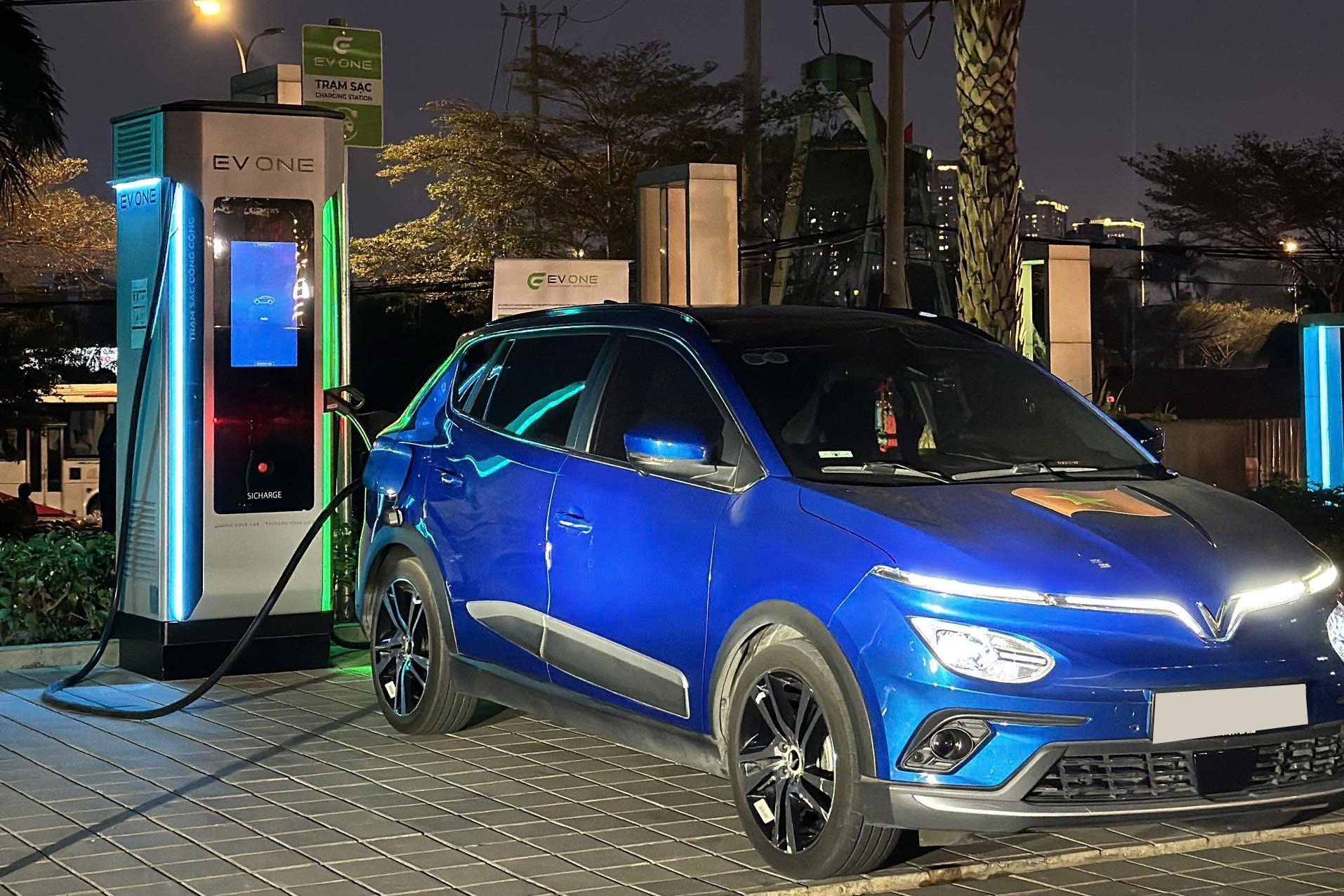
Charging VinFast electric vehicles at third-party stations is just a new experience. Photo: Social Media
In urban areas, charging electric vehicles, especially for non-VinFast brands, remains manageable. Showrooms often install 1–2 charging stations for customer convenience. However, the real challenge arises during long-distance travel, as no brand has established showrooms in remote areas like Ha Giang, Son La, or Dien Bien.
Even on highways, charging often requires exiting the highway and traveling several kilometers to reach a showroom. For example, traveling from Hanoi to Hai Phong, charging in Hai Duong means leaving Highway 5B and adding significant travel time. This inconvenience is notable.
Additionally, Vietnam’s highway rest stops are still limited, with many lacking charging infrastructure. Consequently, electric vehicle users outside VinFast’s ecosystem face considerable challenges during long trips.
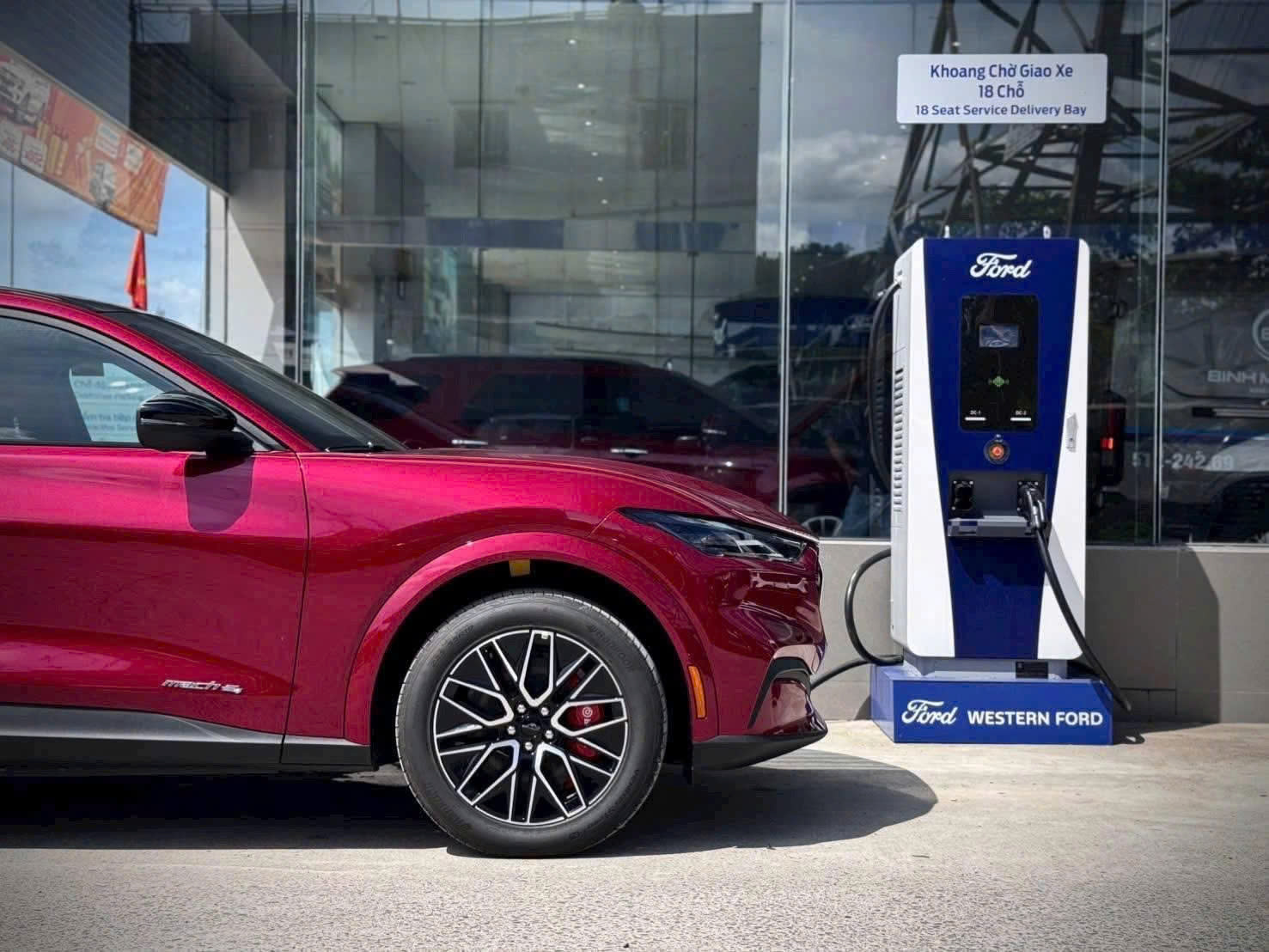
A Ford charging station in Vietnam. Photo: Social Media
In contrast, V-Green has seamlessly integrated charging stations across urban and remote areas, making electric vehicle use as natural as traditional gasoline vehicles.
Recently, there’s been talk of alliances to jointly develop charging infrastructure. Do you think this is what users truly want?
While such alliances would benefit consumers, I believe they are unlikely to materialize.
Currently, some “shared use” exists, with brands like BYD, Geely, Ford, Porsche, and Mercedes occasionally sharing infrastructure. However, this is feasible only when electric vehicle numbers are low and demand is limited. As the market grows, each brand with tens of thousands of vehicles will resist shared infrastructure.
Imagine a Geely showroom with a long line of BYD vehicles charging outside. This would negatively impact Geely’s brand image, which is critical in the automotive industry. Even in China, where electric vehicles are most advanced, competition remains fierce rather than cooperative.

Beyond branding, investment and contribution ratios are complex. For instance, BYD, a pure electric vehicle manufacturer, must invest heavily in charging infrastructure. In contrast, brands like Geely and Chery, which also produce gasoline vehicles, allocate less to charging. Determining fair contribution ratios in a charging alliance would be challenging as vehicle numbers scale.
Lastly, proprietary charging infrastructure is a competitive advantage. It not only meets user needs but also allows brands to offer exclusive services and build their ecosystems. Thus, while shared charging infrastructure sounds appealing, it is unlikely to become a reality.
You’ve owned multiple VinFast electric vehicle models. How would you rate their battery performance?
VinFast uses batteries from top global brands like Samsung SDI and CATL, ensuring high-quality performance. Models like the VF 3 and VF 5 often exceed their advertised range in real-world use, demonstrating reliable battery performance, especially in Vietnam’s conditions.
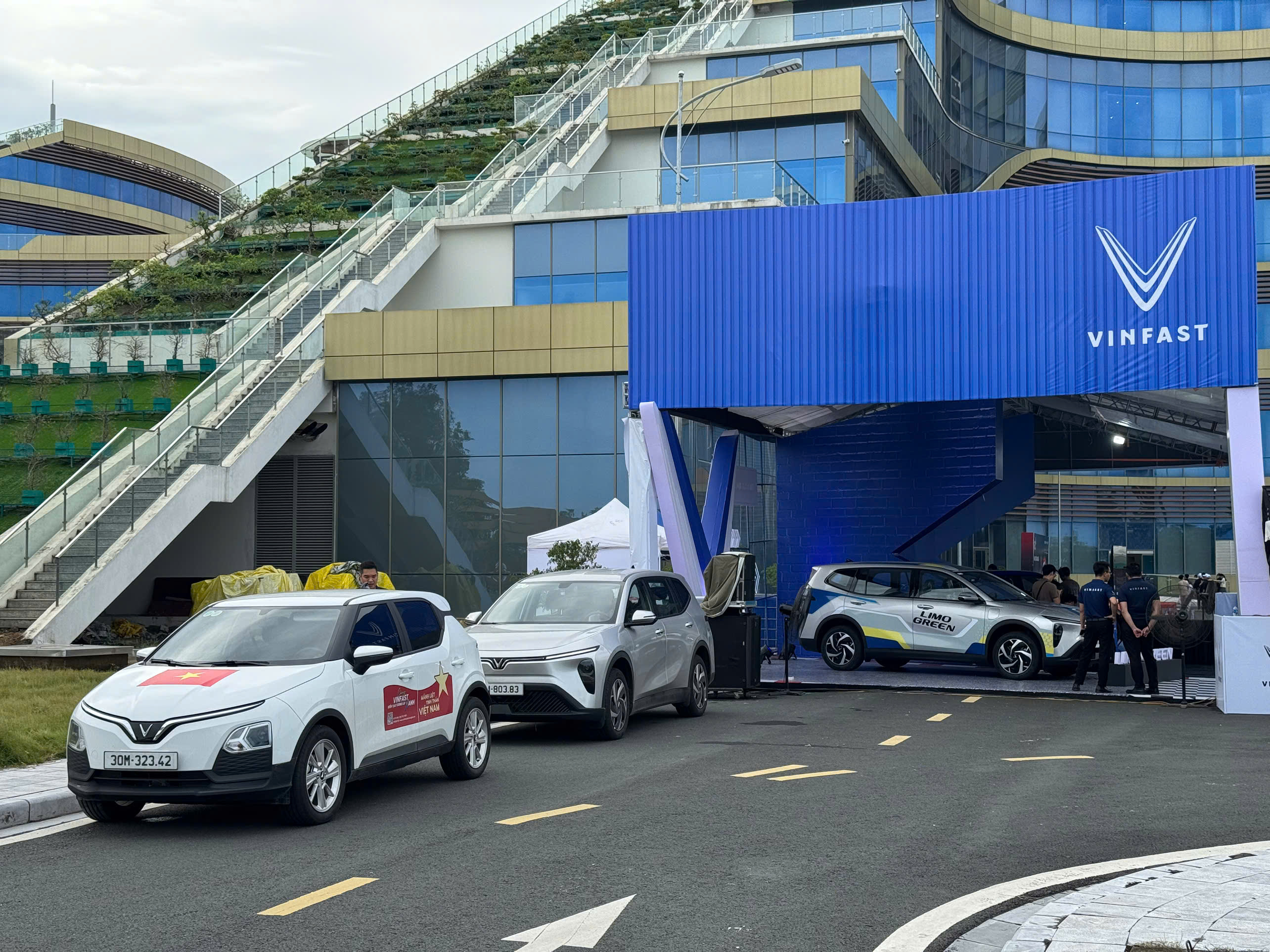
VinFast electric vehicles use world-class batteries.
Battery replacement costs are reasonable. For example, a VF 5 with 170,000 km that suffered accident damage required an 80 million VND battery replacement. The old battery, partially damaged, was sold for 30–40 million VND, reducing the net cost to 40–50 million VND—an acceptable expense given the accident risk.
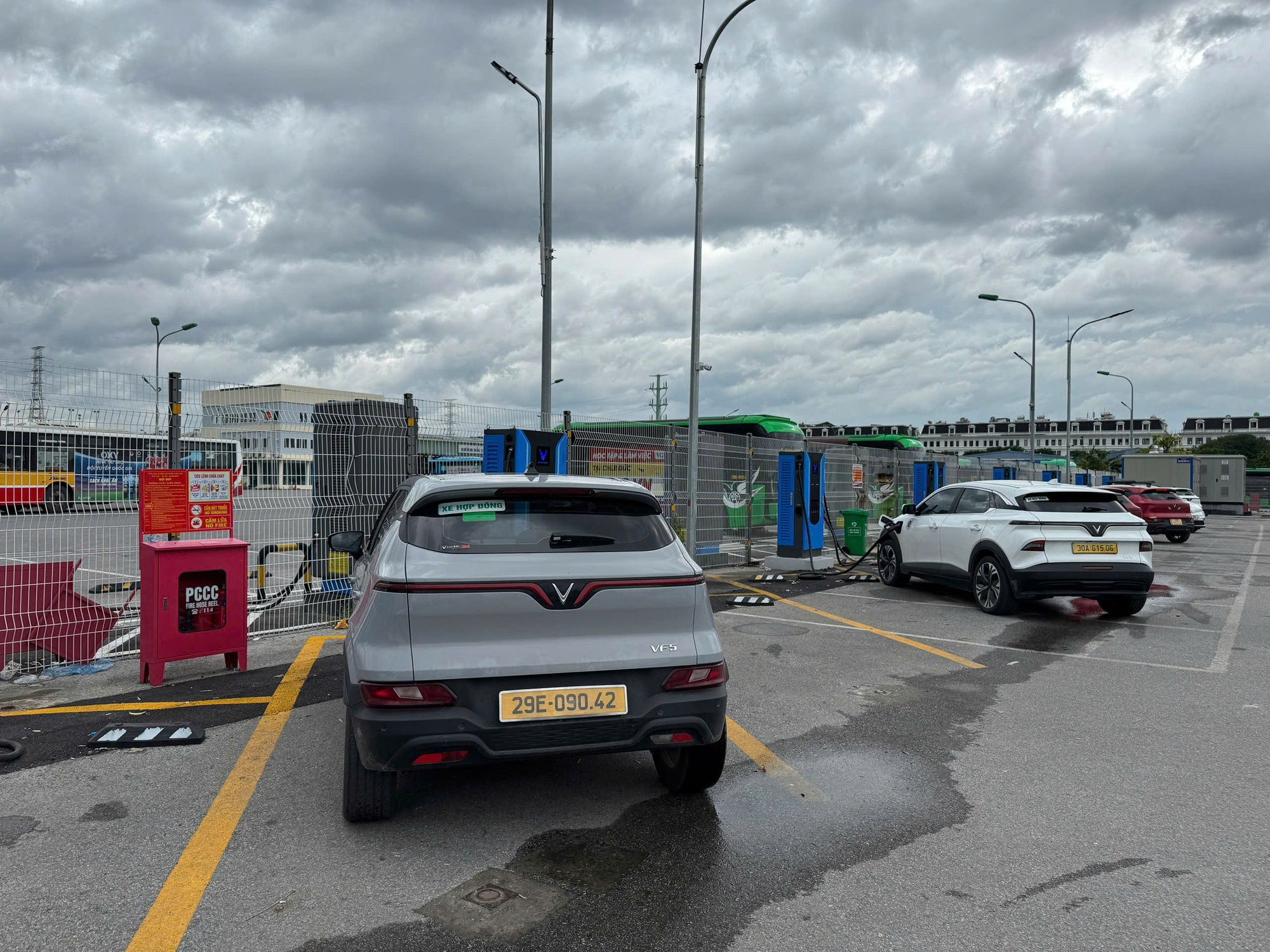
Many VinFast electric vehicles are used as taxis.
Having traveled globally, how does Vietnam’s charging infrastructure compare to other countries?
Electric vehicles are a global trend, with many nations developing charging infrastructure. Vietnam currently ranks behind only the US and China in charging density.
In Southeast Asia and Europe, while some aspects are better abroad, Vietnam’s large urban charging hubs, particularly V-Green’s, are unmatched in the region. No other Southeast Asian company has invested as comprehensively.
However, foreign countries excel in organization and application. They focus on numerous low-capacity AC charging points in parking lots, while Vietnam emphasizes high-capacity DC stations. Additionally, residential charging is more normalized abroad, making electric vehicle use more convenient despite fewer stations.

Statistically, Vietnam’s 150,000 charging ports far exceed Thailand’s 3,000, Indonesia’s 1,000, Malaysia’s few hundred, and Singapore’s low-capacity AC points.
Notably, VinFast and Xanh SM are expanding internationally, aiming to add tens of thousands of stations in Indonesia and the Philippines within the next year. This not only boosts electrification in these countries but also highlights Vietnamese companies’ infrastructure development capabilities.
V-Green aims to reach 500,000 charging ports nationwide. What’s your take on this goal?
Achieving 500,000 ports is feasible given V-Green’s strategies. Initially, many VinFast users charged at public stations despite having home charging options. Now, V-Green provides free or loaned home chargers with electricity subsidies, shifting users to home charging. Each home charger adds a new “port” to their network, accelerating growth.
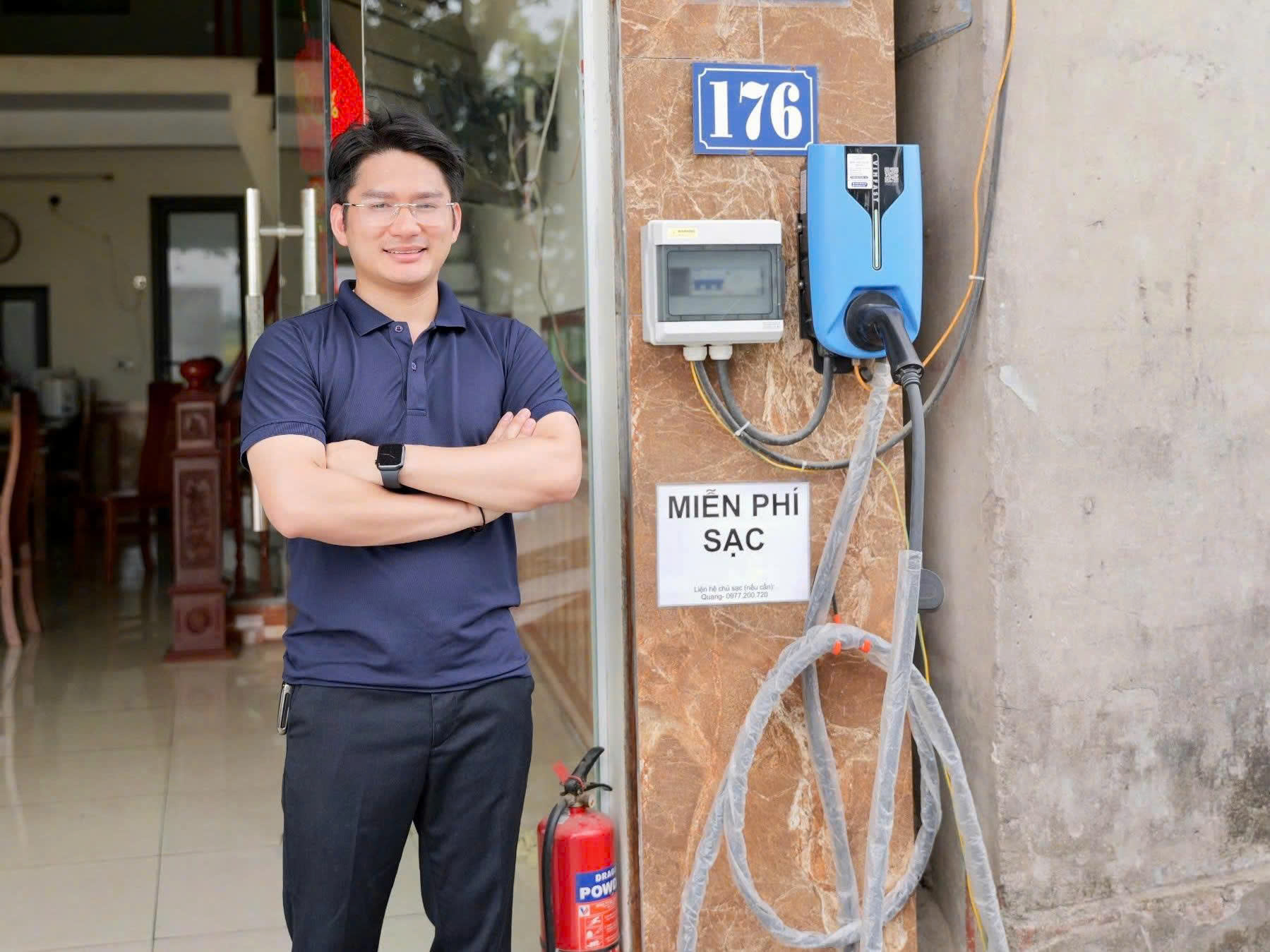
Mr. Nguyen Cao Quang installed a home charging station.
With VinFast’s rapid growth in both vehicle sales and infrastructure, surpassing 500,000 ports within two years is likely. This would solidify Vietnam’s position as a global leader in charging infrastructure density.
Given VinFast’s extensive charging network, how does this influence consumer purchasing decisions?
When buying a vehicle—electric, gasoline, or diesel—needs and quality come first, followed by price. VinFast’s improving affordability, due to production optimization and increased volume, is making electric vehicles more accessible.
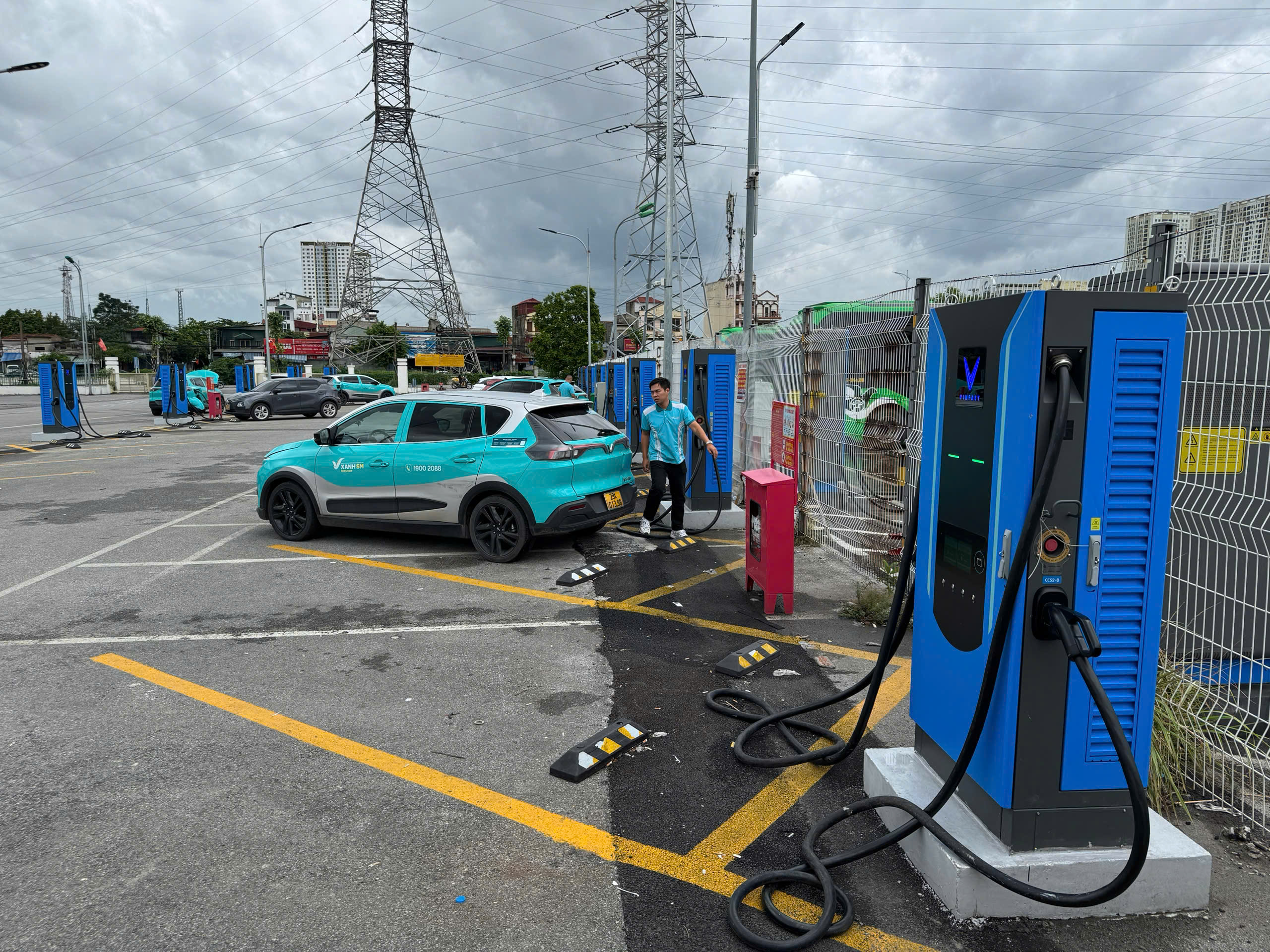
VinFast’s extensive charging network boosts consumer confidence in electric vehicle purchases.
For instance, the VF 7, once rare, is now more common due to its lower price. While premium vehicles (1.5–2 billion VND) may not prioritize electric options, affordable models (500–700 million VND) offer clear advantages: modernity, powerful performance, and lower operating costs. Thus, Vietnam’s electric vehicle adoption is set to rise significantly.
Thank you, Mr. Tung Anh, for your insights.
The program On the Chair is a collaboration between Ho Chi Minh City Television and VCCorp, produced by AutoPro, and commercially exploited by AdWheel. It airs on HTV9 at 18:10 from Monday to Saturday and rebroadcasts at 20:00 on VCCorp’s multi-platform.
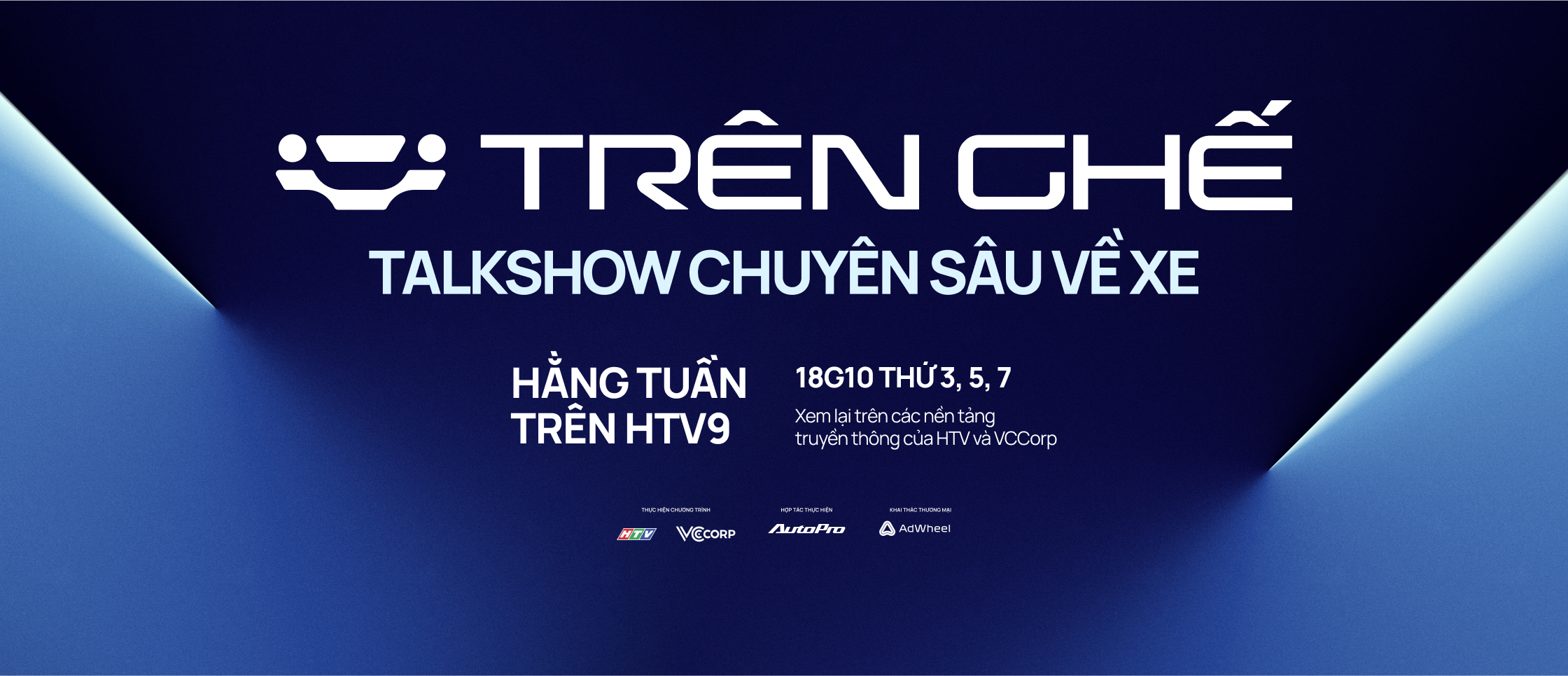
Latest Honda Vision Scooter Price List for October 2025
Discover the latest Vision motorcycle pricing for October 2025, meticulously updated and available at dealerships nationwide. Explore the detailed breakdown in the article below.
Vietnam’s Tech Commodity in High Demand: $43B Earned in 9 Months, Securing 2nd Global Export Rank
China, the United States, and South Korea currently stand as Vietnam’s top three importers for this particular product category.



















